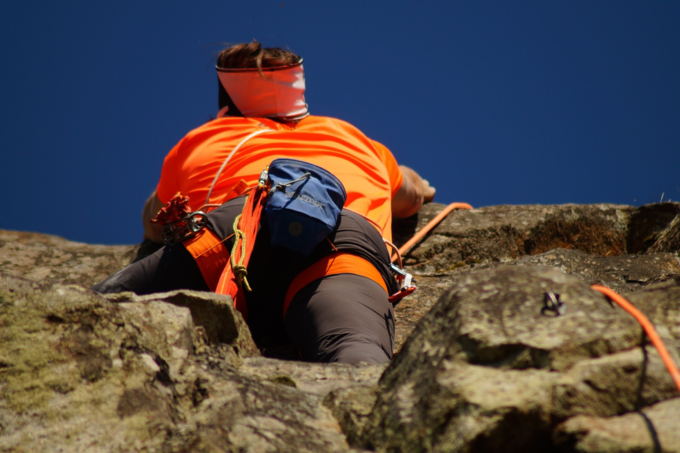
Photo Credit: Pixabay.com
Kevin’s Story
Kevin is my best friend. For the entirely of our friendship, I’ve admired his seemingly innate ability to excel at multiple sports with a drive and exactness I could only dream of replicating.
Several years ago, in a cruel twist of fate, he lost his leg in a devastating car accident. His family and friends imagined that Kevin would be mourning the loss of his athletic pursuits and give up entirely. Much to our shock, Kevin redoubled his efforts, and tackled new challenges head on with the same aplomb as before his accident. Needless to say, he is more inspiring to me than ever.
If you’re living with a physical disability but still crave the rush of an extreme sport, there is a world of opportunity still available to you. Whether you’re in a wheelchair, have mobility limitations, or are suffering from vision or hearing loss, extreme sporting is within your grasp thanks to adaptive technologies and organizations that’ve specialized designs to help.
Wheelchair Sports
For those who require a wheelchair for basic mobility, even sports like basketball, volleyball, and handball may seem out of reach. An increasing number of local gyms offer specific schedules for wheelchair-based gym sports, and some cities have even dedicated entire clubs and leagues for people with disabilities.
Of course, the scope of wheelchair-based activities aren’t limited to sports you can play with a ball on a court. One such sport is sled hockey, which is similar to hockey but with some modified equipment.
“Sled hockey follows most of the typical ice hockey rules with the exception some of the equipment. Players sit in specially designed sleds that sit on top of two hockey skate blades. There are two sticks for each player instead of one and and the sticks have metal picks on the butt end for players to propel themselves,” says USA Hockey.
Extreme chairing is another way to utilize your wheelchair to get your blood pumping. Varieties of this sport include power wheelchair racing, chairing in halfpipes and skate parks, and kart cross (motorized wheelchair motocross).
For the Visually Impaired
A visual impairment – even total vision loss – is no reason to prevent you from having fun with extreme sports. Taking to the water in its various forms is one of the more popular outlets for those living with vision limitations. Scuba diving, sailing, and kayaking are all sports that vision-impaired athletes are enjoying with success. Many water sports involve teams or tandem participation, in which with the aid of a guide an athlete participates and is kept within safety parameters . Hiking and backpacking are also examples of extreme sports that rely on a team framework. For a more independent experience, you can even take a service dog out with you on your hike.
Sports with the Best Adaptive Equipment
Some sports have so much wonderful, well-tested adaptive equipment available that it’s almost the same sporting experience for those with disabilities and those without.
Proper gear is required for any athlete depending on the sport. Certain equipment makes sporting pursuits safer and more comfortable to the user. Thankfully gear companies are constantly engineering their products and the foray into pieces specialized for those with disabilities have been exceptional.
Rock climbing is one such sport. “Rock climbing can be incredibly difficult. It’s a sport that places great demands on your body, core strength, and ability to handle heights. Despite this, climbing is also a fairly popular extreme sport amongst the disabled community, performed both on dedicated climbing walls and in the mountains. Adaptive climbing walls and trained guides mean visually impaired people can learn to scale most rock faces,” says Seable.
With special harnesses and lift mechanisms, even those with little use of their legs can climb to great heights and enjoy honing their skills on the walls.
Skiing is another sport that is perfect for adrenaline junkies who happen to have a disability.
“The primary methods for adaptive skiing and riding are stand-up, sit-down, snowboarding, and ski bike. Stand up skiing includes 2-track, 3-track, and 4-track, while sit skiing includes bi-ski, dual-ski, and monoski,” notes Adaptive Adventures. As you can see, there are tons of options to suit your specific disability. Depending on your skills level, you can choose to sit, stand, and have the support of anywhere from two to four ski blades.
Finally, surfing is gaining popularity among the disabled community thanks to various organizations dedicated to getting people out on the water despite their disabilities. Special surfboards that come with kayak-style paddles are good for some, as is prone surfing where you lie prone on a board and have a partner to assist you with riding out and catching waves.
As my friendship with Kevin has demonstrated, with grit, determination and some good gear, the realm of disciplines of extreme sporting is more accessible than ever.











 We are proud to work with the Department of Agriculture, the White Mountain National Forest and the Androscoggin Ranger District where we are authorized outfitter guides.
We are proud to work with the Department of Agriculture, the White Mountain National Forest and the Androscoggin Ranger District where we are authorized outfitter guides.
